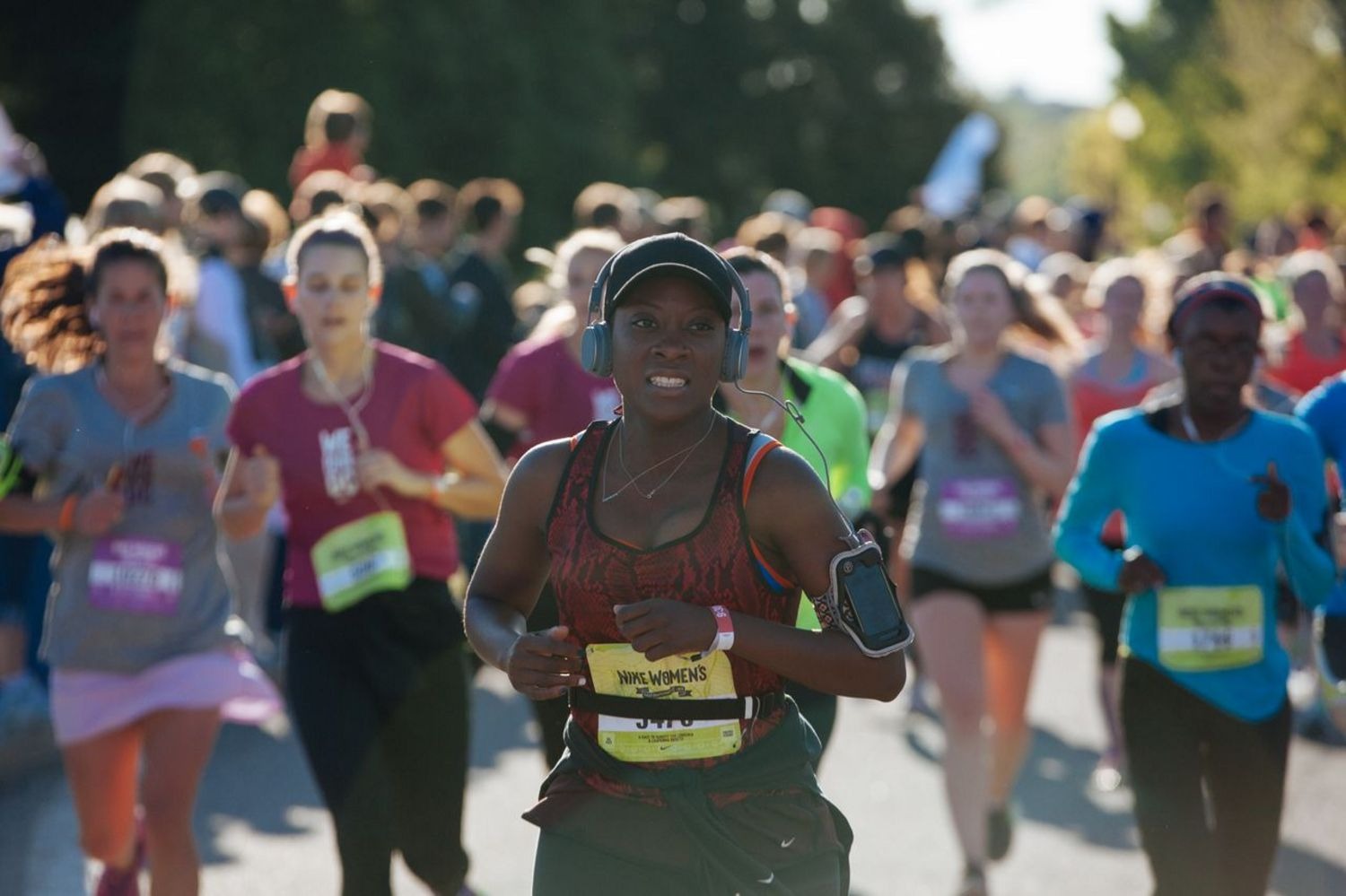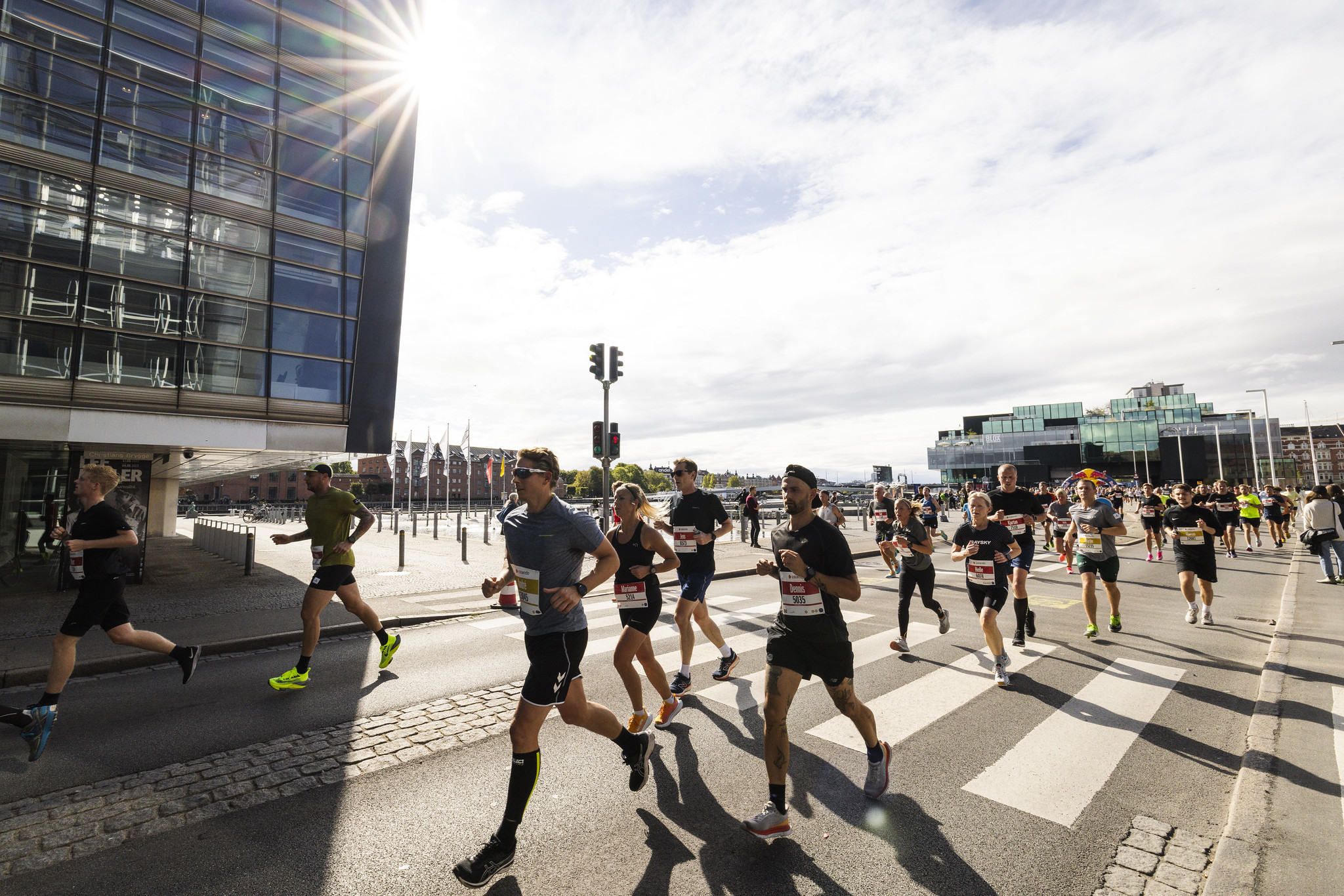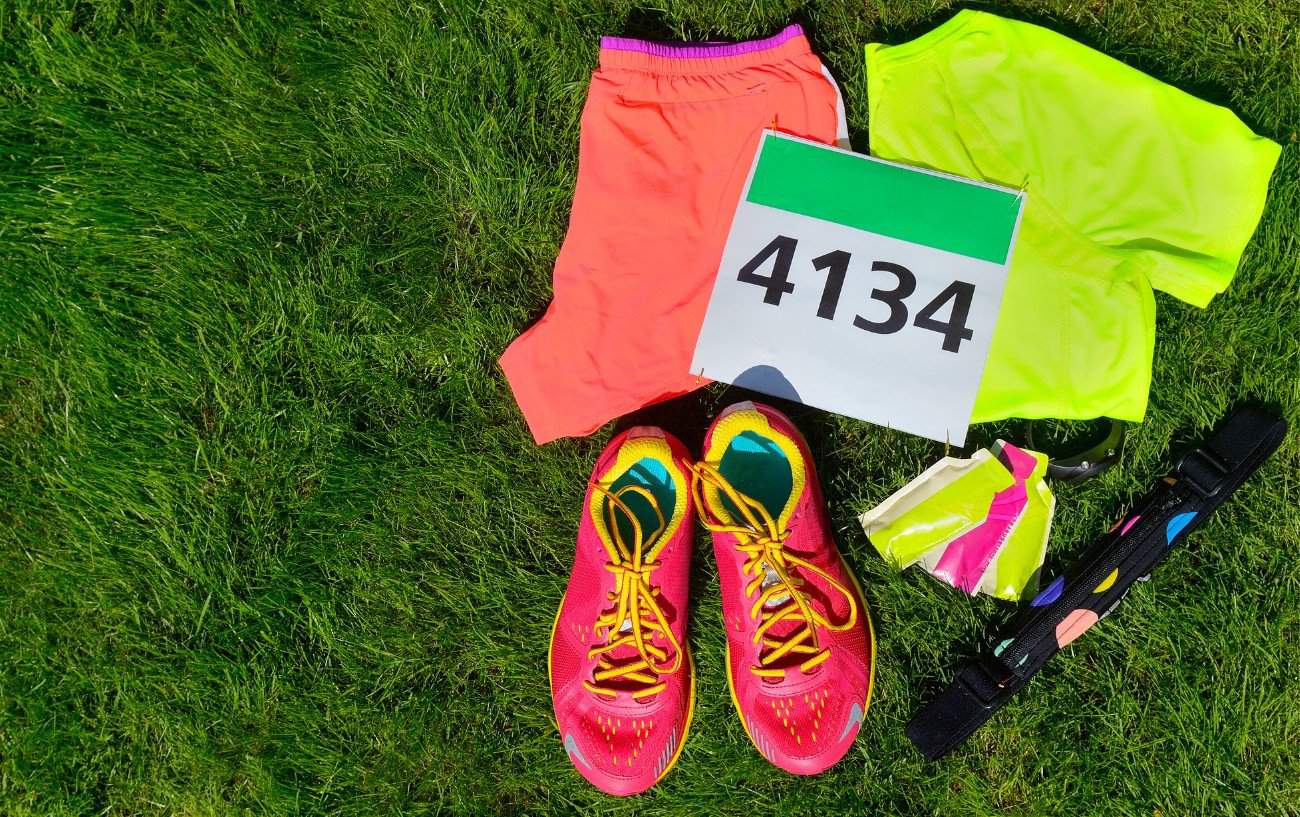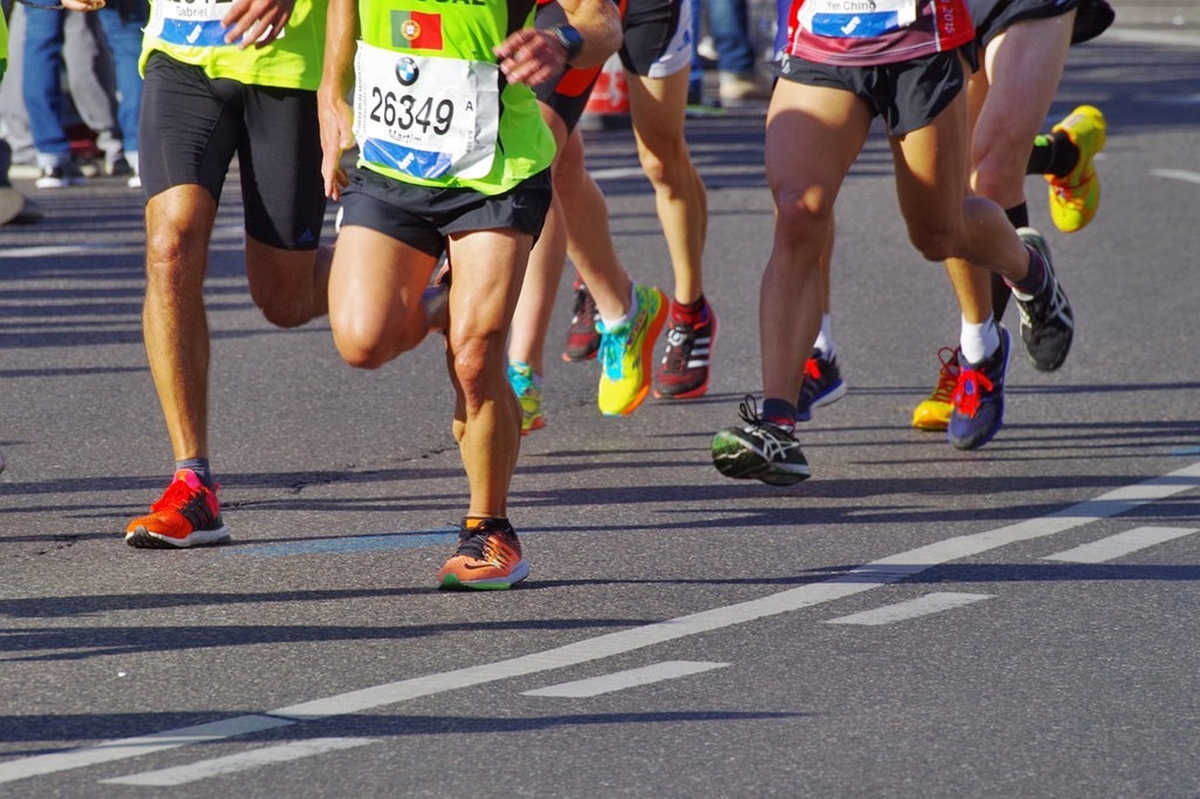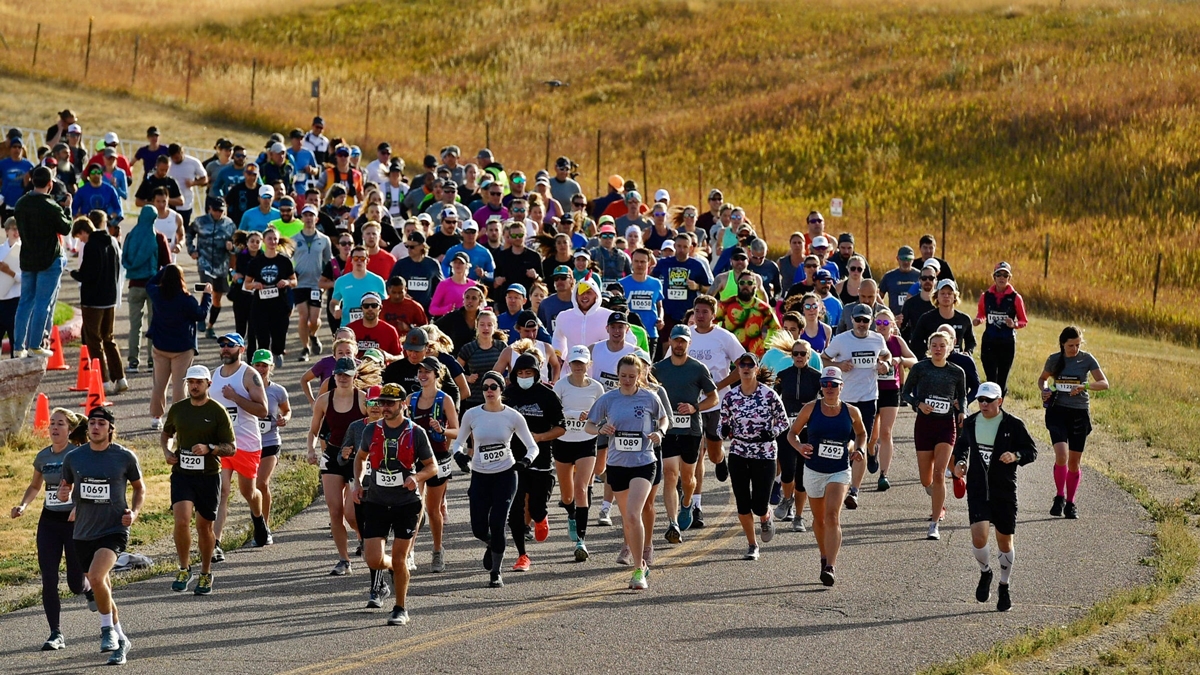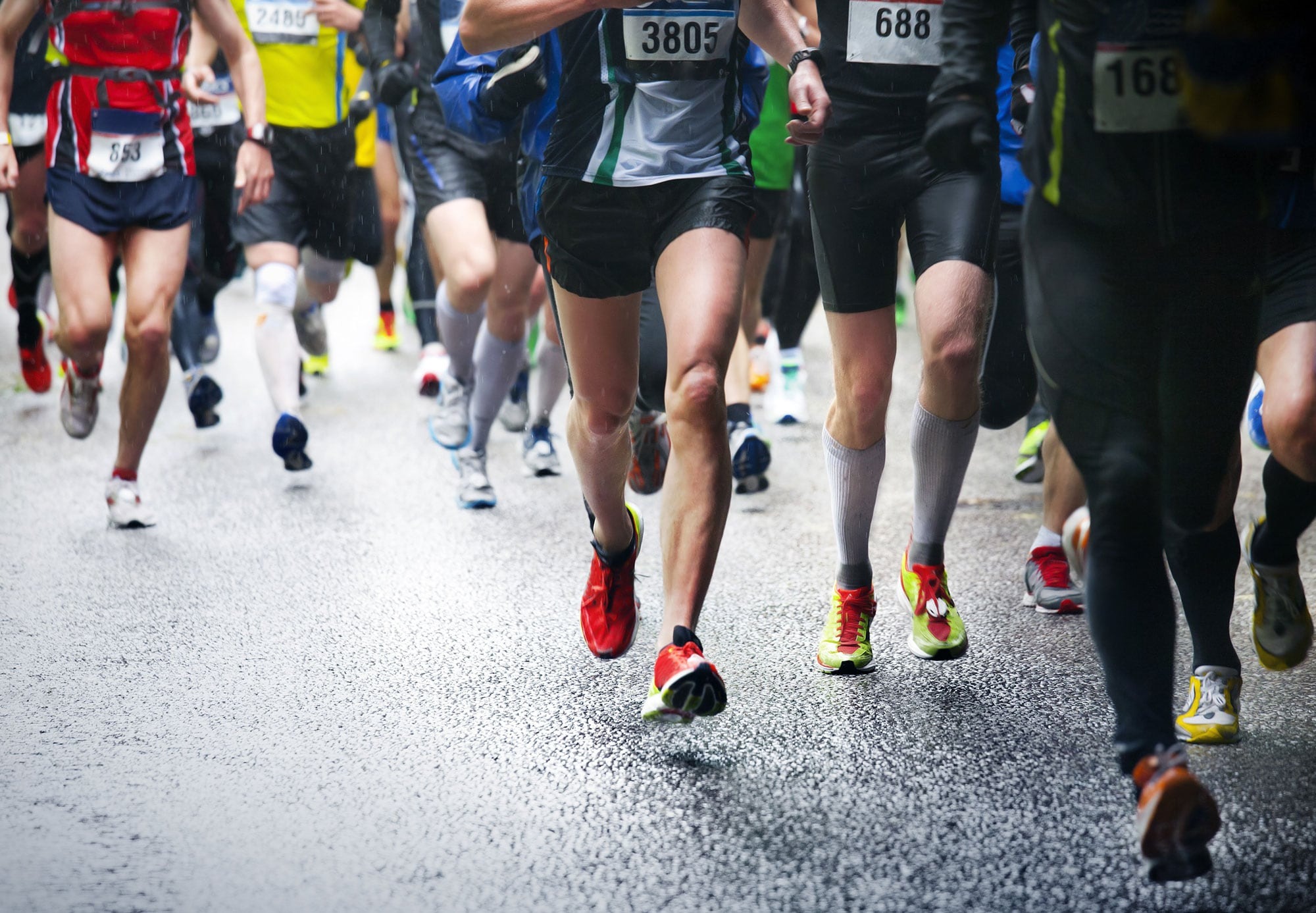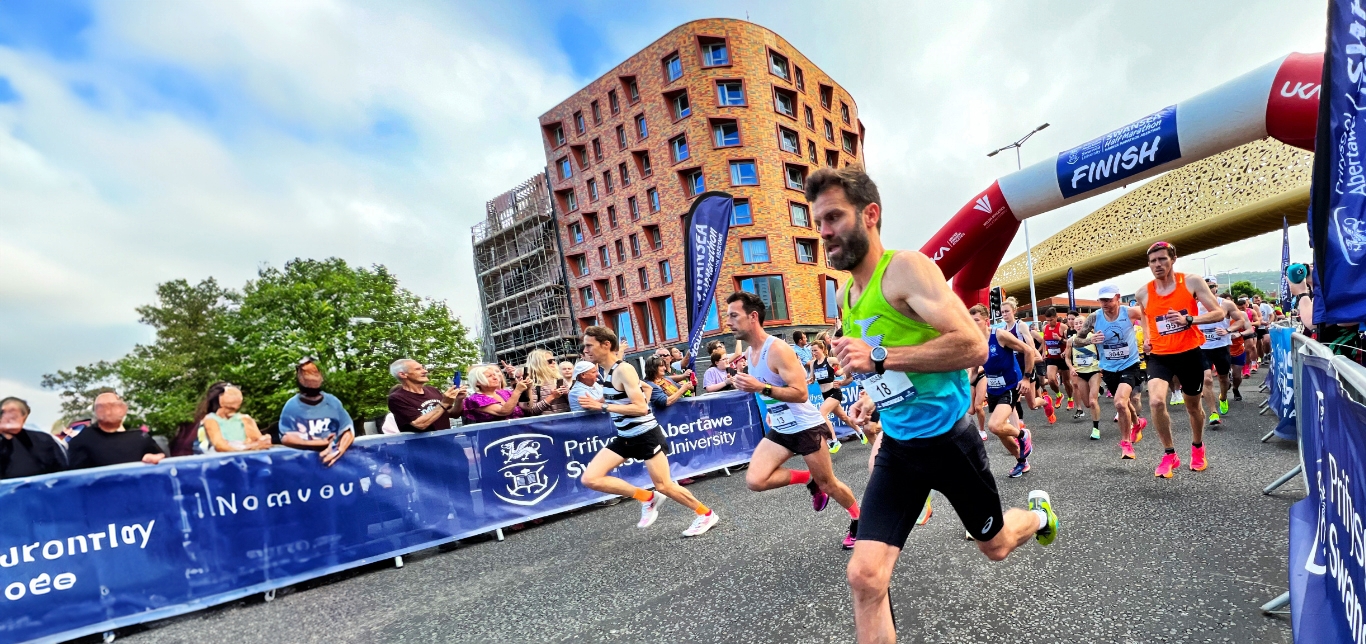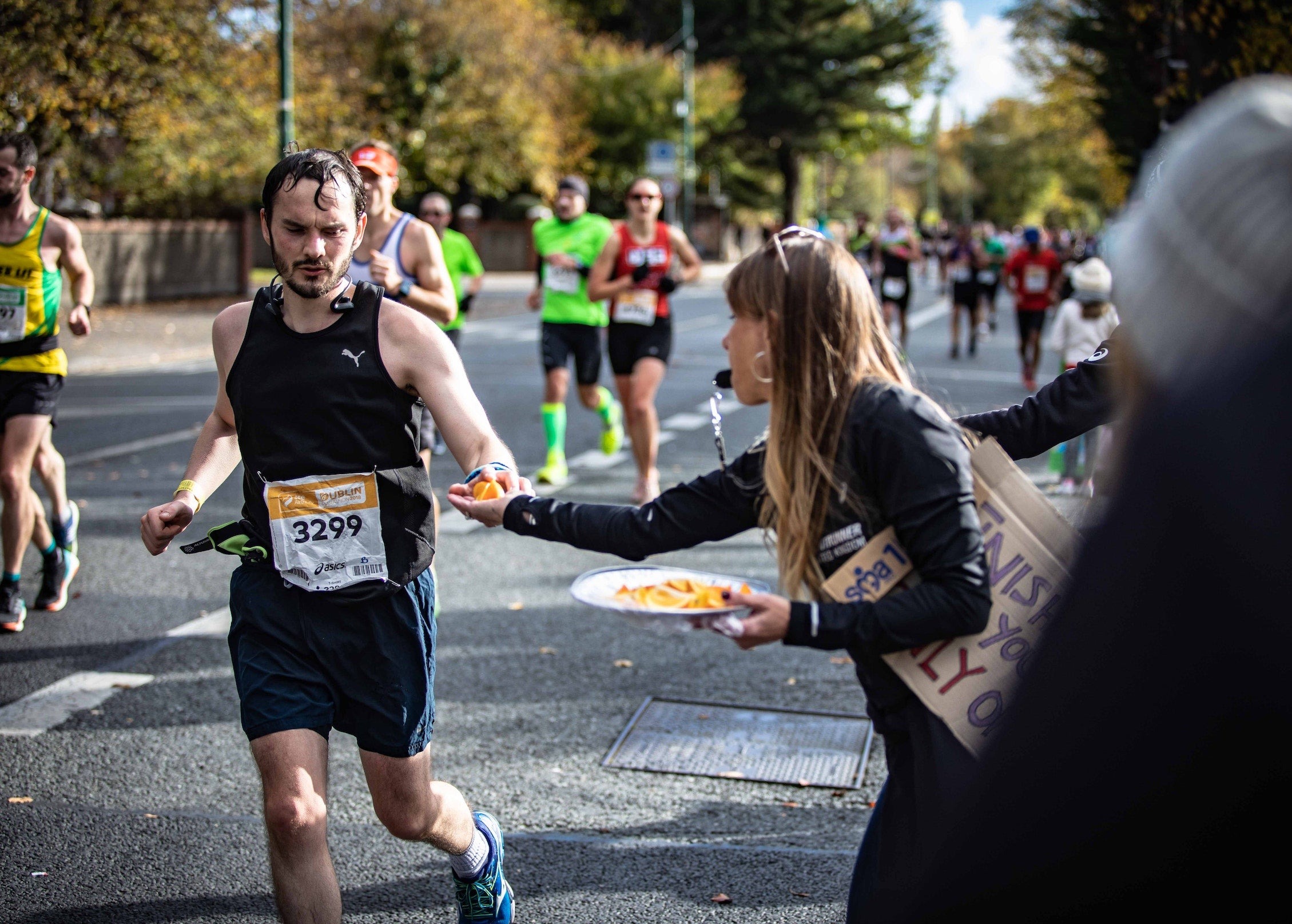

Featured
When To Take Gels Half Marathon
Modified: August 19, 2023
Discover when to take gels during a half marathon in this featured article. Optimize your race performance with expert tips and strategies.
Introduction
When it comes to running a half marathon, fueling your body properly is crucial for optimal performance. One popular method of fueling during a race is through the use of energy gels. These small, portable packets are packed with carbohydrates and electrolytes, providing a quick and convenient source of energy.
In this article, we will explore the benefits of using energy gels during a half marathon and discuss the factors to consider when deciding how and when to consume them. Whether you’re a seasoned runner or new to the sport, understanding the ins and outs of energy gel consumption can make a significant difference in your race day experience.
Before we delve into the details, it’s important to understand what energy gels are and why they are a popular choice among endurance athletes. Energy gels are concentrated supplements designed to provide a quick energy boost during prolonged physical activities, such as long-distance running. They typically contain a blend of simple and complex carbohydrates, electrolytes, and sometimes caffeine.
The primary purpose of energy gels is to replenish the body’s glycogen stores, which become depleted during extended periods of exercise. Glycogen is the body’s primary source of energy, and when it runs low, performance can suffer. By consuming energy gels during a half marathon, you can help maintain adequate glycogen levels and prevent hitting the proverbial “wall.”
Using energy gels for half marathons offers several advantages. Firstly, they are portable and can be easily carried in a pocket or a race belt, allowing for convenient on-the-go consumption. Additionally, gels are quickly absorbed by the body, providing a rapid boost of energy when you need it most. They are also a versatile option since they can be consumed at specific intervals based on your individual needs and preferences.
However, it’s important to note that energy gels are not a one-size-fits-all solution. The timing and frequency of gel consumption can vary depending on factors such as your fitness level, running experience, pace, and personal preferences. It’s crucial to experiment during training runs to determine what works best for you and to develop a gel strategy that will optimize your performance on race day.
In the following sections, we will explore these factors in more detail, examining when to take gels during a half marathon, strategies for pre-race and in-race gel consumption, and tips for post-race recovery. Let’s dive in and discover how to effectively use energy gels to fuel your way to half marathon success.
What Are Energy Gels?
Energy gels are concentrated supplements specifically designed to provide a quick and easily digestible source of energy during prolonged physical activity like running a half marathon. These gels typically come in single-serve packets and are filled with a combination of carbohydrates, electrolytes, and sometimes caffeine.
The primary component of energy gels is carbohydrates, which are essential for fueling the body during endurance activities. Carbohydrates are broken down into glucose, which is then used by the muscles as a source of energy. Energy gels commonly contain a mix of simple and complex carbohydrates to provide both quick and sustained energy. Simple carbohydrates, such as glucose and fructose, are rapidly absorbed by the body and provide a rapid energy boost. Complex carbohydrates, like maltodextrin, are digested more slowly and provide longer-lasting energy.
In addition to carbohydrates, energy gels also contain electrolytes. Electrolytes are minerals that help maintain proper fluid balance, muscle function, and the transmission of nerve signals in the body. Common electrolytes found in energy gels include sodium, potassium, and magnesium. These electrolytes are essential for preventing dehydration and muscle cramps during intense exercise.
Certain energy gels also contain caffeine, a natural stimulant that can enhance athletic performance. Caffeine can increase focus, reduce perceived exertion, and stimulate the release of stored fats for energy. However, it’s worth noting that not all energy gels contain caffeine, so if you prefer a gel without caffeine, there are plenty of options available.
Energy gels are designed to be consumed without water, making them ideal for consumption during a half marathon where access to water may be limited. They have a gel-like consistency, which allows for easy swallowing without the need for chewing. The packets are small and lightweight, making them portable and convenient for carrying during a race.
When selecting energy gels, it’s important to consider personal preferences, dietary restrictions, and any specific nutritional requirements. Energy gels come in a variety of flavors, ranging from fruity to chocolatey, catering to different taste preferences. Some gels are also vegan, gluten-free, or organic, providing options for individuals with specific dietary restrictions or preferences.
Overall, energy gels are a popular and effective choice for fueling during a half marathon. They provide a concentrated source of carbohydrates, electrolytes, and sometimes caffeine to help sustain energy levels and enhance performance. However, it’s important to note that energy gels are not a replacement for proper hydration and a well-balanced diet. They should be used in conjunction with regular water intake and as part of a comprehensive fueling strategy to ensure optimal performance and endurance during a half marathon.
Why Use Energy Gels for Half Marathons?
For runners participating in a half marathon, the use of energy gels can offer several significant benefits. Let’s explore why energy gels are a popular choice for fueling during these races.
1. Convenient and Portable: Energy gels are compact and portable, making them easy to carry during a race. They come in small, lightweight packets that can be easily tucked into a pocket or a race belt. This convenience allows runners to refuel on the go without the need to carry heavy or bulky snacks.
2. Quick and Efficient Energy Boost: Energy gels are designed to provide a rapid source of fuel to the muscles. They are easily digested and absorbed by the body, allowing for a quick energy boost when you need it most. This instant supply of energy can help prevent fatigue and maintain performance levels throughout a half marathon event.
3. Maintaining Glycogen Levels: During longer runs, the body’s glycogen stores can become depleted. Glycogen is the stored form of glucose, which fuels our muscles. When glycogen levels start to decline, runners often experience a decrease in energy and may hit the dreaded “wall.” Energy gels replenish glycogen stores, helping to delay fatigue and maintain a steady energy supply during the race.
4. Electrolyte Replenishment: Energy gels often contain electrolytes such as sodium, potassium, and magnesium. These minerals are essential for proper muscle function and fluid balance. When running a half marathon, electrolytes are lost through sweat, and it’s important to replace them to prevent dehydration and muscle cramps. Energy gels with added electrolytes can help maintain the body’s electrolyte levels and enhance performance.
5. Customizable Consumption: Energy gels provide runners with the flexibility to consume them at specific intervals based on individual preferences and needs. Some runners may choose to take a gel every 30 minutes or at specific mile markers, while others may opt for a gel at the halfway point of the race. This flexibility allows for personalized fueling that can be adjusted based on factors like running pace, weather conditions, and personal tolerance.
6. Improved Mental Focus: Running a half marathon requires mental stamina as well as physical endurance. Energy gels that contain caffeine can provide a mental boost, helping runners stay focused and alert during the race. Caffeine has been shown to enhance concentration, reduce perceived effort, and increase alertness, which can be beneficial during a long-distance run.
It’s important to note that while energy gels offer many benefits, they are not a one-size-fits-all solution. Every runner is different, and it may take some experimentation during training runs to determine the optimal gel strategy for you. Consulting with a sports nutritionist or seeking guidance from experienced runners can also provide valuable insights and help tailor a gel consumption plan to meet your specific needs.
In the next sections, we will dive deeper into the factors to consider when deciding how and when to consume energy gels during a half marathon. By understanding these factors, you can develop a gel strategy that maximizes your performance and helps you reach the finish line feeling strong and energized.
Factors to Consider
When it comes to using energy gels during a half marathon, there are several important factors to consider to ensure that you effectively fuel your body and optimize your performance. Let’s explore these factors in more detail:
1. Fitness Level: Your fitness level plays a crucial role in determining your gel consumption strategy. Experienced runners who are used to longer distances and have trained their bodies to efficiently utilize energy may require fewer gels compared to novice runners. It’s essential to listen to your body and adjust gel intake based on your fitness level.
2. Running Experience: Your experience as a runner also influences your gel consumption plan. If you have previously used energy gels during training runs or previous races, you may already have an idea of what works best for you. Experimenting with different gels and gel strategies during your training can provide insights into how your body responds to various options.
3. Pace: The pace at which you run the half marathon will determine your gel intake requirements. Faster runners may need to consume gels more frequently since they are covering the distance in a shorter amount of time. On the other hand, slower runners may not require as many gels since they are running at a more moderate pace. Adjust your gel strategy according to your average pace during training runs.
4. Individual Tolerance: Each runner has a unique tolerance to consuming energy gels. Some runners may find that they can consume gels without any digestive issues, while others may experience gastrointestinal distress. It’s important to experiment during training runs to determine how your body responds to different gel brands, flavors, and timings. Choose gels that are gentle on your stomach and don’t cause discomfort or digestive problems.
5. Weather Conditions: The weather conditions on race day can affect your gel consumption plan. High temperatures and humidity can increase the risk of dehydration, and it may be necessary to consume gels more frequently to maintain electrolyte balance and hydration. Take into account the weather forecast and adjust your gel strategy accordingly to ensure adequate fueling and hydration.
6. Gel Intake Timing: Timing is crucial when it comes to consuming energy gels during a half marathon. A general guideline is to start taking gels after 45-60 minutes of running to ensure that your glycogen stores are adequately depleted. However, it’s important to listen to your body and adjust the timing based on your individual needs and preferences. If you feel like you need a quick energy boost earlier in the race, it’s perfectly fine to consume a gel earlier than the recommended time.
As you consider these factors, remember that gel consumption during a half marathon is a personal choice. It’s essential to find what works best for your body through experimentation during training runs. Keep a journal to track your gel intake, how you felt during your runs, and any observations you make along the way.
Ultimately, developing a gel consumption strategy that is tailored to your specific needs and preferences will ensure that you remain fueled and energized throughout the half marathon, enabling you to perform at your best and cross that finish line with a sense of accomplishment.
Timing of Gel Consumption
The timing of gel consumption during a half marathon is crucial to ensure that you maintain a steady supply of energy throughout the race. Here are some important factors to consider when deciding when to take energy gels:
1. Pre-race Nutrition: Before the race, it’s important to fuel your body with a balanced meal that includes a combination of carbohydrates, protein, and fats. This will help top up your glycogen stores and provide sustained energy for the start of the race. Avoid consuming energy gels immediately before the race as this can lead to digestive discomfort. Instead, aim to consume a gel about 30-45 minutes before the race begins to give your body time to process it.
2. During the Race: As a general guideline, it’s recommended to start taking energy gels after 45-60 minutes of running. This ensures that your glycogen stores are depleted and you’re in need of an energy boost. However, listen to your body and adjust the timing based on your individual needs. If you start feeling fatigued or low on energy earlier in the race, it’s okay to consume a gel earlier than planned.
3. Gel Intervals: The intervals between gel consumption will depend on your pace and the total duration of the race. Most runners find that consuming an energy gel every 45-60 minutes is sufficient. However, if you are running at a faster pace or anticipate a longer race time, you may need to consume gels at more frequent intervals. Experiment during your training runs to determine the optimal gel interval for you.
4. Water Stations: Many half marathons have designated water stations along the course. Take advantage of these stations to hydrate and wash down your energy gels. Consuming gels with water helps with their digestion and absorption, ensuring that you get the most out of each gel. If water stations are not available, carry a small handheld water bottle or use a hydration pack to ensure you have access to water when needed.
5. Avoid Gel Overload: While energy gels are designed to provide a quick source of fuel, consuming too many gels in a short period can lead to digestive discomfort or an energy crash. Stick to the recommended intake and follow the guidelines provided on the gel packaging. It’s better to slightly under-consume gels than to overload your system and risk feeling sluggish or experiencing gastrointestinal issues.
6. Adjustments Based on Training: Every runner is different, and what works for one person may not work for another. Pay attention to how your body responds to gel consumption during your training runs. Take note of how long it takes for the gel to kick in and how long the energy boost lasts. Use this information to adjust your gel timing and intake for race day.
Remember, gel consumption during a half marathon is a personal process that requires experimentation. During your training runs, try different timing intervals and gel brands to find what works best for you. Practice your gel strategy in a variety of training conditions to ensure that it will work well on race day.
By carefully considering the timing of gel consumption and tailoring it to your individual needs, you’ll be able to maintain a consistent energy level and perform at your best during the duration of the half marathon.
Training and Experimentation
Training and experimentation play a vital role in determining the most effective gel consumption strategy for a half marathon. Every runner is unique, and finding the right approach requires trial and error. Here are some key considerations to keep in mind:
1. Begin Early: Start incorporating energy gels into your training runs to get a sense of how your body responds to them. Begin with lower-intensity workouts and gradually build up to longer and more intense runs. This will give you a chance to gauge how the gels affect your performance and whether any adjustments are needed.
2. Gel Timing: During your training runs, experiment with different gel timings to find what works best for you. Test consuming gels at different intervals, such as every 45 minutes, every hour, or based on distance markers. Take note of when you start feeling fatigued and if the gel provides the desired energy boost. This will help you determine the optimal gel timing for race day.
3. Gel Brands and Flavors: There are numerous gel brands and flavors available on the market, each with its own taste and formulation. Use your training runs as an opportunity to try out various brands and flavors to find the ones that you enjoy and are easy on your stomach. It’s important to select gels that you find palatable, as this will make gel consumption during the race more enjoyable.
4. Hydration: Proper hydration is essential when using energy gels. Experiment with taking gels alongside water or sports drinks to determine how it affects your digestion and performance. Some runners find that taking gels without water leads to dehydration or stomach discomfort. Finding the right balance of gel consumption and hydration will ensure optimal energy delivery during your race.
5. Digestive Comfort: Pay attention to how your body responds to the gels during training. Some runners may experience digestive discomfort or gastrointestinal issues when consuming gels. If this is the case, try different gel brands or consider alternative fueling options. Everyone’s digestive system is unique, so finding a gel that works well with your body is crucial.
6. Race Simulation: As you near your half marathon, incorporate race simulations into your training. This involves replicating the race distance, pace, and gel consumption strategy. By practicing your gel consumption during these simulations, you can fine-tune your strategy and ensure that everything feels comfortable and familiar on race day.
Keep a training journal to record your experiences and observations during each run. Make note of the gel brand, timing, and any other factors you modify during your training. This will help you identify patterns and make informed adjustments to your gel consumption strategy.
Remember, training and experimentation are ongoing processes. As you continue to improve as a runner and gain experience, your gel consumption strategy may need to be adjusted or refined. Stay open-minded and adaptable, and be willing to make changes based on what works best for your body and performance goals.
By investing time and effort into training and experimentation, you’ll arrive at the starting line of your half marathon with confidence, knowing that you’ve tailored your gel consumption strategy to fuel your body optimally and maximize your performance on race day.
Pre-race Gel Strategy
Developing a pre-race gel strategy is an important part of preparing for a half marathon. By fueling your body properly before the race, you can start on the right foot and maintain a steady energy level throughout. Here are some key considerations for your pre-race gel strategy:
1. Timing: Consuming an energy gel about 30-45 minutes before the race is a common practice. This allows your body enough time to digest the gel and convert it into usable energy. However, it’s important to experiment during your training runs to determine what timing works best for you. Some runners may find that they need a longer or shorter lead time before the race to avoid any digestive discomfort.
2. Gel Selection: Choose a gel brand and flavor that you enjoy and that has worked well for you during your training runs. The pre-race gel should be similar to the ones you’ve used in your training to avoid any unexpected reactions or discomfort. Stick to gels that are easily digestible and don’t contain any ingredients that might upset your stomach.
3. Macronutrient Balance: While energy gels are primarily a source of carbohydrates, it’s essential to consider a balanced pre-race meal that includes protein and healthy fats. Incorporate foods such as whole grains, lean proteins, fruits, and vegetables into your pre-race meal to ensure a gradual release of energy throughout the race. Pairing your pre-race gel with a well-rounded, nutritious meal will provide a steady and sustained source of energy.
4. Hydration: Along with consuming a gel, it’s important to hydrate adequately before the race. Proper hydration helps with digestion and keeps your body in a hydrated state for optimal performance. Drink water or a sports drink in the hours leading up to the race, and avoid consuming excessive amounts of caffeinated or sugary beverages, as they can dehydrate you.
5. Personal Experimentation: Your pre-race gel strategy should be customized to your individual needs and preferences. Use your training runs as an opportunity to experiment with different gel timing and combinations. Pay attention to how your body responds to different pre-race gel strategies and make adjustments accordingly.
6. Mental Preparation: Incorporating a pre-race gel into your routine can also provide a psychological boost. Knowing that you have properly fueled your body before the race can instill confidence and help reduce pre-race nerves. Take the time to relax, visualize a successful race, and mentally prepare yourself for the task ahead.
Remember, the pre-race gel strategy is just one piece of the puzzle. It should be complemented by a well-rounded approach to nutrition, hydration, and mental preparation. Aim to have a plan in place and practice it during your training runs to ensure that it works well for you on race day.
By developing and implementing an effective pre-race gel strategy, you’ll be giving yourself the best chance for a strong and successful half marathon performance.
In-race Gel Strategy
Your in-race gel strategy is essential to sustaining energy levels and maintaining performance during a half marathon. Having a well-thought-out plan for when and how to consume energy gels during the race can make a significant difference in your overall performance. Here are some key considerations for your in-race gel strategy:
1. Gel Timing: As mentioned earlier, a general guideline is to start taking energy gels after 45-60 minutes of running to ensure that your glycogen stores are adequately depleted. However, this can vary depending on factors such as your pace, fitness level, and individual needs. Pay attention to your body and adjust the timing based on how you feel during the race. If you start feeling fatigued or low on energy earlier, it’s perfectly acceptable to consume a gel earlier than planned.
2. Gel Intervals: Determine the intervals at which you will consume your energy gels throughout the race. Most runners find that taking a gel every 45-60 minutes is sufficient, but this can vary based on individual preferences and the duration of the race. Experiment during your training runs to find the interval that works best for you. Consider timing your gels with water stations to ensure proper hydration and assist in gel digestion.
3. Consistency: It can be helpful to establish a consistent routine for consuming energy gels during the race. This could include setting specific time intervals or based on mile markers. Establishing a routine will ensure that you consistently fuel your body at regular intervals, helping to sustain your energy levels and avoid hitting the “wall.”
4. Hydration: Hydration is key when consuming energy gels. Take advantage of water stations along the course to hydrate and wash down the gels. Sip water or sports drinks to aid in digestion and keep your body properly hydrated. If water stations are not available, carry a small handheld water bottle or use a hydration pack to ensure you have access to water when needed.
5. Listen to Your Body: Pay attention to how your body responds to the energy gels during the race. Some runners may find that they need an extra boost towards the latter part of the race, while others may prefer to spread out their gel intake more evenly. Adjust your gel consumption based on how you’re feeling and trust your instincts.
6. Mental Focus: Using energy gels during the race not only provides physical benefits but can also offer a mental boost. Before consuming a gel, remind yourself of the energy it will provide and how it can positively impact your performance. Use this mental boost to stay focused, maintain a positive mindset, and push through any challenging moments during the race.
Remember, practice makes perfect. Use your training runs as an opportunity to experiment with different gel strategies and find what works best for you. The in-race gel strategy should be tailored to your preferences, pace, and race conditions. Through trial and error, you’ll be able to establish an effective approach that will help you maintain energy and reach your goals on race day.
By implementing a well-planned and well-executed in-race gel strategy, you’ll give yourself the best chance for a strong and successful half marathon performance.
Post-race Recovery
Post-race recovery is a critical phase in the half marathon journey. Taking proper care of your body after the race will help facilitate healing, reduce muscle soreness, and promote overall recovery. Here are some important tips to aid your post-race recovery:
1. Rehydrate: After completing a half marathon, it’s crucial to replenish the fluids lost during the race. Drink plenty of water or a sports drink to restore hydration levels. Electrolyte-rich beverages can also help restore electrolyte balance in your body. Aim to rehydrate gradually over the hours following the race.
2. Refuel with Nutritious Food: Replenishing your energy stores is essential for recovery. Consume a well-rounded meal that includes a mix of carbohydrates, protein, and healthy fats. Carbohydrates will help replenish glycogen stores, while protein aids in muscle repair and growth. Incorporate fruits, vegetables, lean proteins, whole grains, and healthy fats into your post-race meal to support recovery.
3. Stretch and Cool Down: Engage in gentle stretching and cool-down exercises to help relieve muscle tension and prevent stiffness. Focus on stretching the major muscle groups used during the race, such as the calves, quads, hamstrings, and glutes. This will aid in muscle recovery and reduce the chances of post-race soreness.
4. Ice or Cold Therapy: Applying ice or using cold therapy can help reduce inflammation and alleviate muscle soreness. Taking an ice bath or applying ice packs to sore areas can speed up the recovery process. If using ice packs, ensure they are wrapped in a cloth to protect your skin from frostbite.
5. Active Recovery: Engage in light physical activity, such as walking or gentle cycling, in the days following the race. This helps to increase blood flow and flush out metabolic waste products from your muscles. Active recovery promotes healing and aids in preventing muscle stiffness.
6. Rest and Sleep: Allow your body to rest and recover by getting ample sleep in the days following the race. Sleep plays a crucial role in muscle repair and overall recovery. Aim for 7-9 hours of quality sleep each night to optimize recovery processes.
7. Reflect and Celebrate: Take a moment to reflect on your half marathon accomplishment and celebrate your achievement. Acknowledge your hard work and dedication, and be proud of yourself for completing the race. Positive emotions and a sense of accomplishment can contribute to mental recovery and motivation for future endeavors.
8. Gradual Return to Training: While it’s important to rest and recover, you may feel the urge to resume training. It’s recommended to give your body adequate time to recover before returning to your regular training routine. Ease back into running gradually and listen to your body for any signs of lingering fatigue or injury.
Remember, post-race recovery is a crucial part of the running process. The steps you take in the hours and days following a half marathon can help optimize your recovery, minimize post-race soreness, and prepare you for future races and training. Give yourself the time and care you need to regenerate and come back stronger.
Conclusion
Fueling your body properly during a half marathon is key to achieving optimal performance and reaching your goals. Energy gels have become a popular choice among runners due to their convenience and effectiveness in providing a quick source of energy. Developing a well-thought-out gel strategy is essential to ensure that you maintain energy levels, avoid hitting the “wall,” and sustain performance throughout the race.
Understanding the factors to consider, such as fitness level, running experience, pace, and individual tolerance, will help you tailor your gel consumption strategy to your specific needs. Experimentation during training runs is crucial to identifying the optimal timing, intervals, and types of gels that work best for your body. This process allows you to fine-tune your strategy and find what fuels you most effectively.
The pre-race gel strategy should focus on consuming a gel about 30-45 minutes before the race for a timely energy boost. During the race, following an in-race gel strategy, based on timing intervals, hydration, and individual needs, will help maintain a steady energy supply. Post-race recovery, including adequate hydration, nutritious refueling, stretching, and rest, is vital to facilitate healing and muscle repair.
Remember that every runner is unique, and your gel consumption strategy may differ from others. Finetune your strategy based on individual preferences, trial and error, and regular training. Listen to your body and adjust as needed to ensure optimal performance and enjoyment during your half marathon experience.
By incorporating energy gels into your half marathon routine and through careful planning, experimentation, and a focus on post-race recovery, you’ll be equipped to fuel your body effectively, overcome challenges, and cross the finish line with confidence and a sense of achievement.
